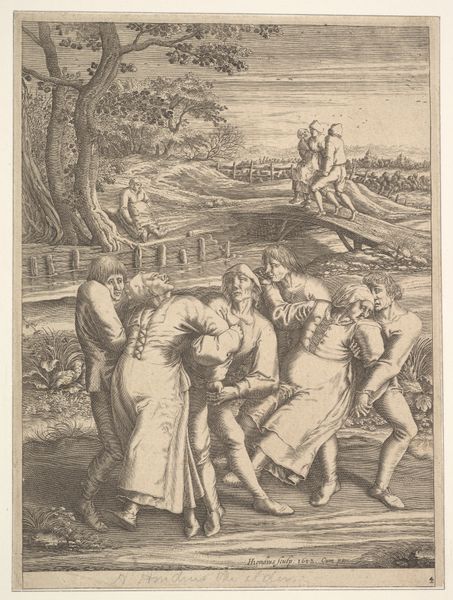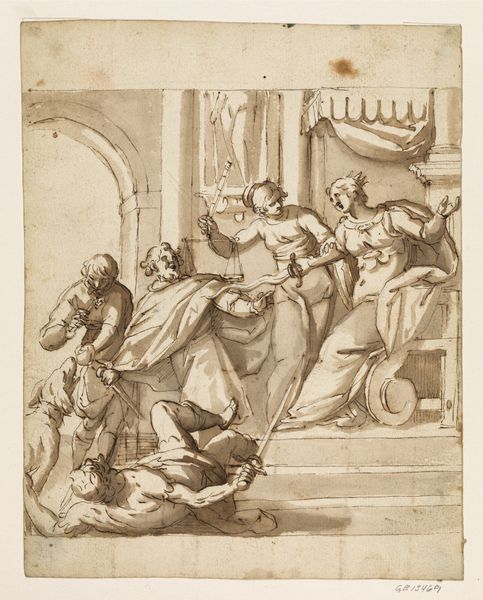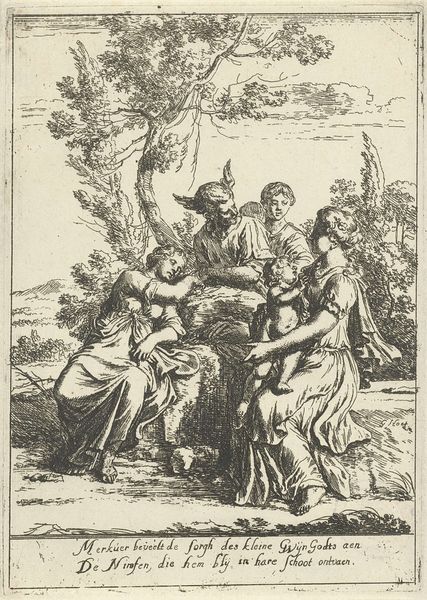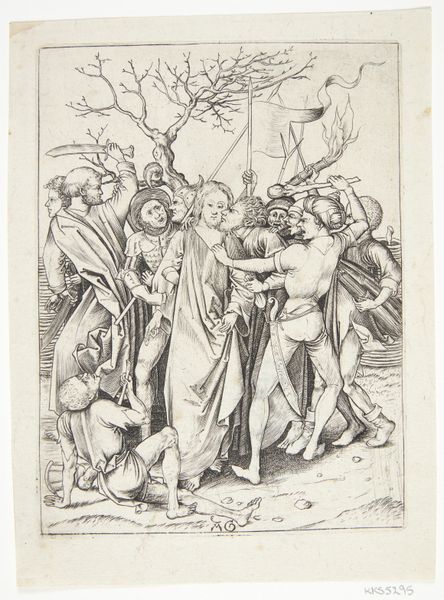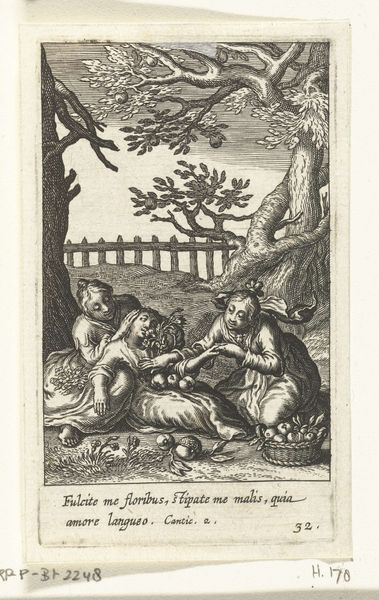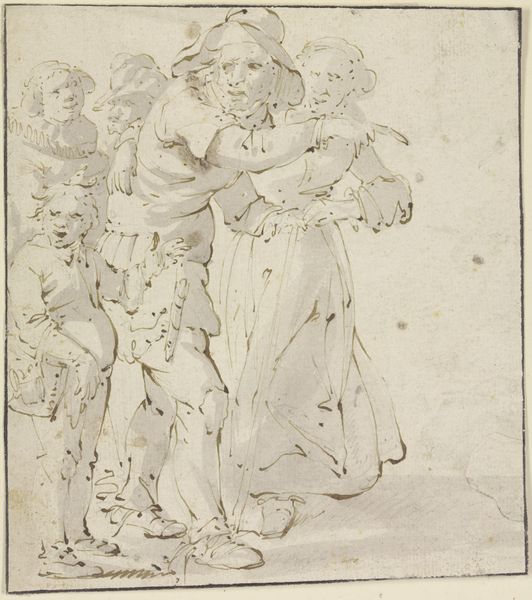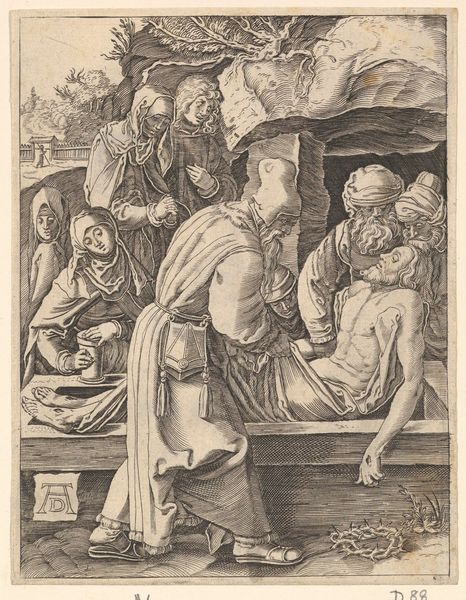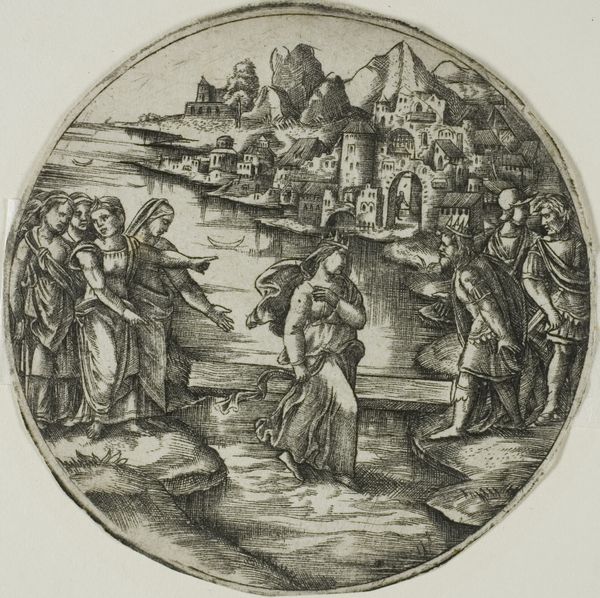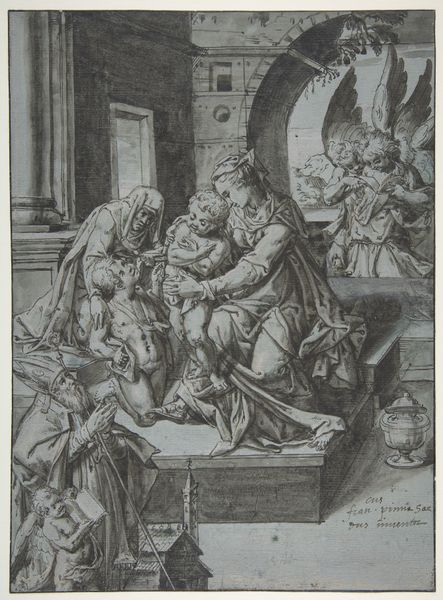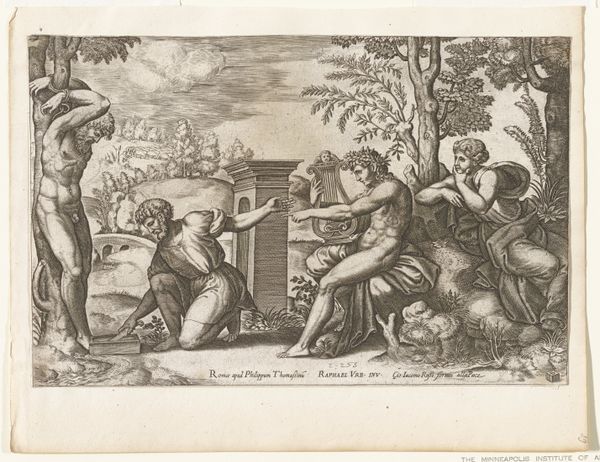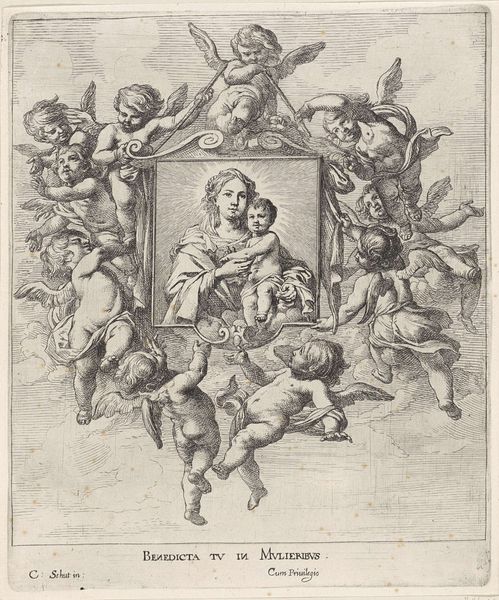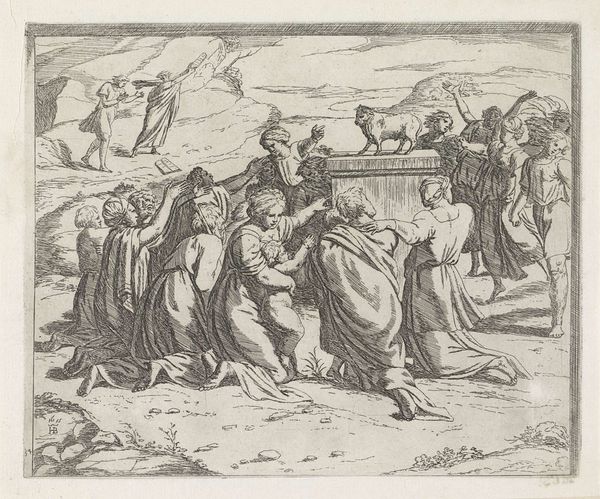
drawing, print, ink, engraving
#
drawing
#
ink drawing
#
medieval
#
narrative-art
# print
#
figuration
#
ink
#
line
#
history-painting
#
northern-renaissance
#
engraving
Dimensions: 146 mm (height) x 110 mm (width) (bladmaal)
Curator: Here we have a piece entitled "Kristi gravlaeggelse," or "The Entombment of Christ," created between 1475 and 1490 by the artist known only as Monogrammist AG. This print, held at the Statens Museum for Kunst, captures a poignant biblical scene. Editor: The overwhelming mood for me is grief, the somber stillness as Christ's body is being laid to rest. The artist has crafted an evocative moment through the delicate lines and shading of the figures; you feel the weight of sadness. Curator: Yes, the composition focuses heavily on the emotional display. Think about the historical context. Religious art was vital; it instructed and moved the public. This print was not just decorative; it was didactic, shaping the understanding of Christ's Passion. Editor: The means of production—engraving—would've been pretty meticulous. Consider the labor involved, the way each line had to be carved into the plate. This affects the accessibility; prints allow wider distribution than, say, a painting in a private collection, thus informing social behaviors more widely. The act of physically engraving these lines really affects the intensity of that visual and social narrative. Curator: Exactly, the reproduction factor made works such as this influential in disseminating religious narratives across social classes. The format itself encouraged contemplation, inviting individuals into that very specific moment. Editor: Look, you can almost feel the texture of Christ's body, despite this being a print. The linear style gives the piece a tangible depth, drawing me in close to the narrative as a viewer. Curator: Its place within the Northern Renaissance reminds us how artists adopted printmaking to participate in spreading humanistic and religious ideas, impacting both society and politics through imagery. Editor: For me, looking at the level of skill involved in translating something so viscerally physical, like grief or like a human body, into ink on paper… it just makes me think differently about the value that society then places on art and visual experience. Curator: Ultimately, this print provides a unique look into late 15th-century society, blending personal devotion with communal identity. Editor: A tangible example of labor, devotion and material combined to create something much bigger, a belief system visualised.
Comments
No comments
Be the first to comment and join the conversation on the ultimate creative platform.
